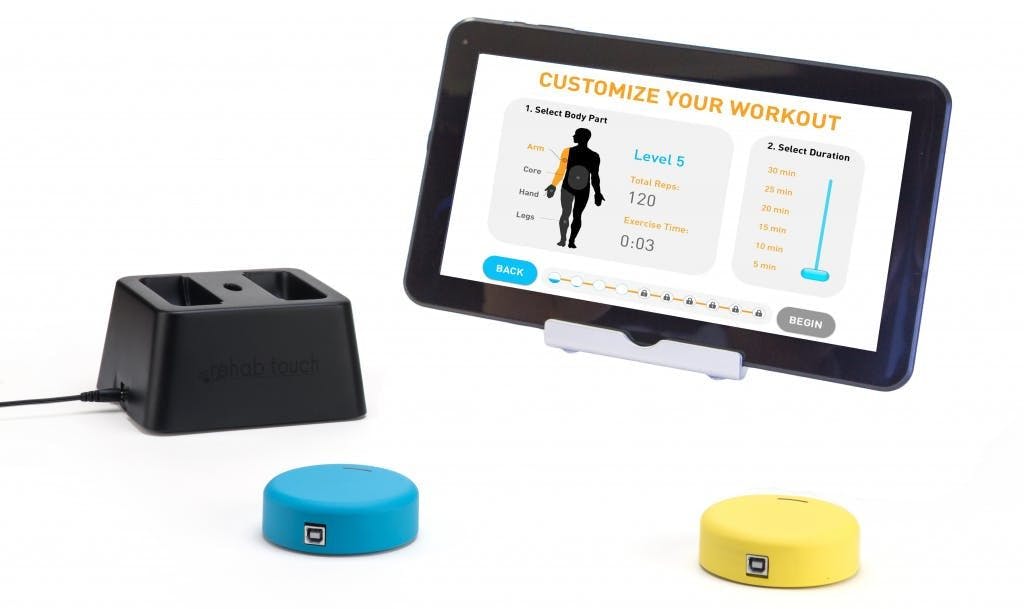With about 17,810 new cases of spinal cord injury occurring in the United States each year, it is essential to recognize its financial implications. The cost of spinal cord injury will vary from person to person depending on many factors including the severity of their injury and how soon they receive medical attention. Luckily, there are proven ways to optimize functional outcomes after a spinal cord injury to reduce lifetime costs.
To help you understand the costs associated with having a spinal cord injury, this article will discuss:
- What factors contribute to the cost of spinal cord injury?
- How to reduce the cost of spinal cord injury
What Factors Contribute to the Cost of Spinal Cord Injury?

It can be challenging to determine the lifetime costs of a spinal cord injury because every injury and its recovery process are unique. Two factors that significantly impact the cost of spinal cord injury are the location and severity of one’s injury.
The location of your SCI matters because it determines how much of the body is affected. Because signals from the brain cannot pass through spinal cord damage, individuals will experience motor and sensory impairments below the level of injury. The higher your level of injury, the more functions can be affected. As a result, those with higher-level spinal cord injuries tend to incur more costs.
For example, individuals with high cervical injuries have an average expense of $1,149,629 in the first year after SCI while individuals with mid-to-lower levels of injury average about half that amount, at $560,287.
Damage to the spinal cord disrupts the communication of signals between the brain, peripheral nerves, and muscles. Therefore, the more severe your spinal cord injury, the more neural pathways will be affected and the greater the loss of motor control and sensation. In contrast, those with milder SCIs may have spared neural pathways that allow for more movement and sensation below the level of injury. Generally, the greater your functional impairments are, the more costly treatment will be.
In the following section, we’ll discuss additional factors that can affect the cost of spinal cord injury.
Acute Spinal Cord Injury Treatment Costs
Immediately after a spinal cord injury, most individuals will need surgery to remove damaged structures that are compressing the spinal cord or to stabilize the spine by fusing vertebrae together.
On average, the cost for this acute spinal cord injury treatment is about $142,366. Most of these costs should be covered by the patient’s health insurance.
The timing of surgery after SCI also plays a major role in determining overall costs because earlier surgical intervention is correlated with shorter hospital stays and lower hospital resource utilization. Patients who underwent surgery 72 hours after hospital admission remained in the hospital on average 5 days longer than those who had early surgery.
Post-Injury Rehabilitation Costs For Spinal Cord Injury

Following a spinal cord injury, it is essential for individuals to participate in rehabilitative therapies to learn how to improve their functional abilities, prevent secondary complications from developing, and mentally prepare for the road ahead of them. These are invaluable skills that help individuals become more independent and have a better quality of life.
Let’s take a look at what rehabilitation after spinal cord injury may consist of.
Physical Therapy
Physical therapy for spinal cord injury focuses on improving motor control through targeted exercises. The exercises may vary depending on the location and type of spinal cord injury (complete vs incomplete spinal cord injury). A physical therapist will assess your functional abilities and create a personalized exercise regimen.
Occupational Therapy
Occupational therapy will prepare you to return to your day-to-day life by practicing activities of daily living such as brushing your teeth or feeding. An occupational therapist can also help prepare you to return to work or school. They may also recommend types of adaptive equipment to help you be as independent as possible.
Speech therapy
Individuals with higher-level SCI’s may experience breathing difficulties due to weakness or paralysis of the diaphragm, intercostal muscles, and core. At speech therapy, individuals will practice exercises to improve lung capacity and cough strength. Additionally, those with higher level SCI’s may have dysphagia, or difficulty swallowing. A speech therapist is also able to address this by working on strengthening the muscles involved and/or recommending a modified diet in order to eat safely.
Psychotherapy
Although an SCI primarily affects motor control and sensation, it can also significantly affect one’s mental health. At psychotherapy, individuals will learn the most effective ways to cope with the aftermath of their spinal cord injury. This can help individuals deal with the day to day activities and stay motivated throughout their recovery.
Many insurance plans will only cover rehabilitative therapies for a certain amount of time. As a result, individuals who are unable to pay out-of-pocket may struggle to get the rehabilitation they need to minimize long-term complications.
Therefore, it is important to be fully engaged and work hard while you are financially able to participate in rehabilitative therapies in order to optimize your long-term outcomes and minimize costs. Also, it is essential to ask your therapist for a home exercise program you can utilize even after you’ve finished participating in formal therapy to maintain the improvements you’ve made and continue to progress.
Long-Term Management Costs
It’s important to understand that spinal cord injuries are lifetime conditions that require long-term management. As a result, individuals can expect additional costs after discharge from the hospital or rehabilitation center.
Long-term costs can be attributed to:
- Secondary complications. Due to limited mobility and sensation, individuals with SCIs have a greater risk for developing secondary complications like pressure ulcers, spasticity, and chronic pain. Treatment for these complications can add to overall costs.
- Orthotics. Orthotics are wearable devices that provide structural support. They help maintain musculoskeletal alignment and gently stretch tight muscles. Some may be covered by insurance, but not all.
- Medications. The cost of medications can add up, especially if you have to take them long-term. Management of secondary complications may require various medications ranging from generic painkillers to opioids to antidepressants.
- Hiring a caregiver. Individuals with higher-level SCIs may need to hire a caregiver to help with activities of daily living such as bathing and toileting.
- Home modifications. Some individuals will need home modifications like wheelchair ramps, grab bars, and walk-in or roll-in showers built into their homes to help them become more independent and safe.
- Adaptive tools. Many SCI patients will need to use adaptive tools like universal cuffs, adapted utensils, and reachers to perform activities of daily living on their own.
Now that you understand the various factors that contribute to the cost of an SCI, let’s discuss how to save.
Helpful Tips to Reduce the Cost of Spinal Cord Injury
As you’ve just learned, various factors can impact the cost of a spinal cord injury. Fortunately, there are also several ways to cut costs as you continue to pursue recovery.
Below, we’ll go over 6 helpful tips to help you save where you can.
1. Buy a Used Wheelchair
Generally, Medicare and Medicaid will cover the cost of a manual or power wheelchair if your doctor/therapist prescribes it. Those with private insurance may or may not be covered for equipment based on their specific healthcare plan.
If you must pay for your wheelchair out of pocket, you can save on costs by renting rather than buying, or buying used rather than new.
Although a wheelchair may be one of the more expensive pieces of equipment you will need, take advantage of resale shops to purchase other equipment as needed. Many have tub benches, raised toilet seats, walkers, and other equipment available for a much more affordable price.
Furthermore, if you are uncertain whether a certain device is right for you, ask your physical or occupational therapist if you can trial it for a period rather than buying it out of pocket. Additionally, many communities have loan closets where you could borrow a piece of equipment to see if it will work for you, or they may allow you to keep it until you have the financial resources to purchase one yourself.
2. Work on Rehab from Home
Your insurance should cover your therapy sessions in the hospital, at home if you’re homebound, and at an outpatient clinic for a certain time period. After this period, however, consider investing in some rehabilitation devices that will help you work on recovery from home. The sooner you recover, the less you’ll have to pay in lifetime costs.

Flint Rehab’s FitMi is a full-body home therapy program that challenges individuals with weakness to perform the repetitions they need to improve. It includes over 40 leg, core, arm, and hand exercises, which makes it ideal for any level of injury.
3. Understand Your Insurance Policy
It’s important to take the time to understand your insurance policy. This will help you be aware of what services you can take advantage of. Additionally, many healthcare plans will have a cutoff amount or require a co-pay fee for certain services, so you may still have some out-of-pocket costs.
4. Join a Spinal Cord Injury Support Group
Joining a spinal cord injury support group will introduce you to an extensive network of free information. You’ll be surrounded by people that understand your situation and can learn from their experiences. A support group will also provide comfort, hope, and reassurance that life after SCI does get better.
5. Maintain Your Overall Health
Many secondary complications of spinal cord injury like pressure ulcers and weight gain are preventable. Eating healthy and being physically active can significantly improve your health by keeping your body fit and fueled for optimal performance.
Being physically active throughout the day will help improve circulation, speed up your metabolic rate, and prevent pressure ulcers. By reducing the risk of developing other health problems, you’ll be able to save time and money to focus on SCI recovery.
6. Try Alternative Treatments
Many insurance policies won’t cover alternative treatments like massage therapy or acupuncture. However, alternative treatments are generally affordable,have a minimal risk of side effects compared to prescription medications, and have many potential benefits.
In the long run, paying for alternative treatments may save you from having to pay for additional healthcare fees or more invasive treatments.
The Cost of Spinal Cord Injury: Key Points
For some, investing in SCI rehabilitation early will help save on overall lifetime costs. Others may not be in a financial position to invest early and will find it more beneficial to slow down and pay more long-term. This will vary significantly based on each individual’s recovery outlook, priorities, and financial situation.
We hope this article helped you understand the hidden costs of spinal cord injury and some helpful ways to save.











